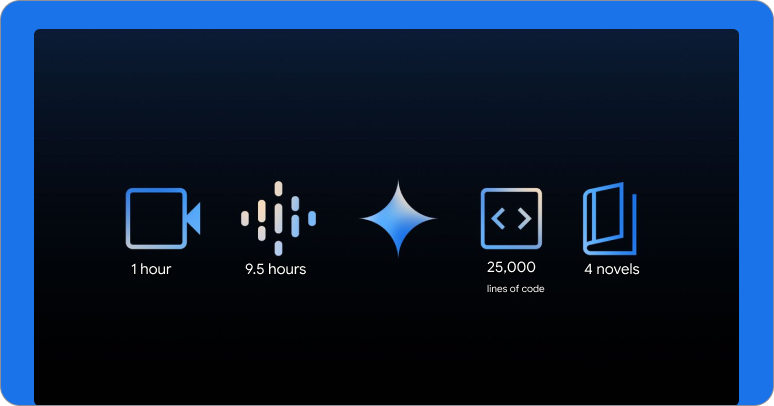Gemini Developer API
รับคีย์ Gemini API และส่งคําขอ API รายการแรกได้ในไม่กี่นาที
from google import genai
client = genai.Client(api_key="YOUR_API_KEY ")
response = client.models.generate_content(
model="gemini-2.0-flash",
contents="Explain how AI works in a few words",
)
print(response.text)
import { GoogleGenAI } from "@google/genai";
const ai = new GoogleGenAI({ apiKey: "YOUR_API_KEY " });
async function main() {
const response = await ai.models.generateContent({
model: "gemini-2.0-flash",
contents: "Explain how AI works in a few words",
});
console.log(response.text);
}
await main();
package main
import (
"context"
"fmt"
"log"
"google.golang.org/genai"
)
func main() {
ctx := context.Background()
client, err := genai.NewClient(ctx, &genai.ClientConfig{
APIKey: "YOUR_API_KEY ",
Backend: genai.BackendGeminiAPI,
})
if err != nil {
log.Fatal(err)
}
result, err := client.Models.GenerateContent(
ctx,
"gemini-2.0-flash",
genai.Text("Explain how AI works in a few words"),
nil,
)
if err != nil {
log.Fatal(err)
}
fmt.Println(result.Text())
}
package com.example;
import com.google.genai.Client;
import com.google.genai.types.GenerateContentResponse;
public class GenerateTextFromTextInput {
public static void main(String[] args) {
// The client gets the API key from the environment variable `GOOGLE_API_KEY`.
Client client = new Client();
GenerateContentResponse response =
client.models.generateContent(
"gemini-2.0-flash",
"Explain how AI works in a few words",
null);
System.out.println(response.text());
}
}
curl "https://generativelanguage.googleapis.com/v1beta/models/gemini-2.0-flash:generateContent?key=YOUR_API_KEY " \
-H 'Content-Type: application/json' \
-X POST \
-d '{
"contents": [
{
"parts": [
{
"text": "Explain how AI works in a few words"
}
]
}
]
}'
พบกับโมเดล
สำรวจ API
สำรวจบริบทแบบยาว
ป้อนโทเค็นหลายล้านรายการลงในโมเดล Gemini และดึงข้อมูลเชิงลึกจากรูปภาพ วิดีโอ และเอกสารที่ไม่มีโครงสร้าง
สร้างเอาต์พุตที่มีโครงสร้าง
จำกัดให้ Gemini ตอบกลับด้วย JSON ซึ่งเป็นรูปแบบ Structured Data ที่เหมาะสำหรับการประมวลผลอัตโนมัติ




